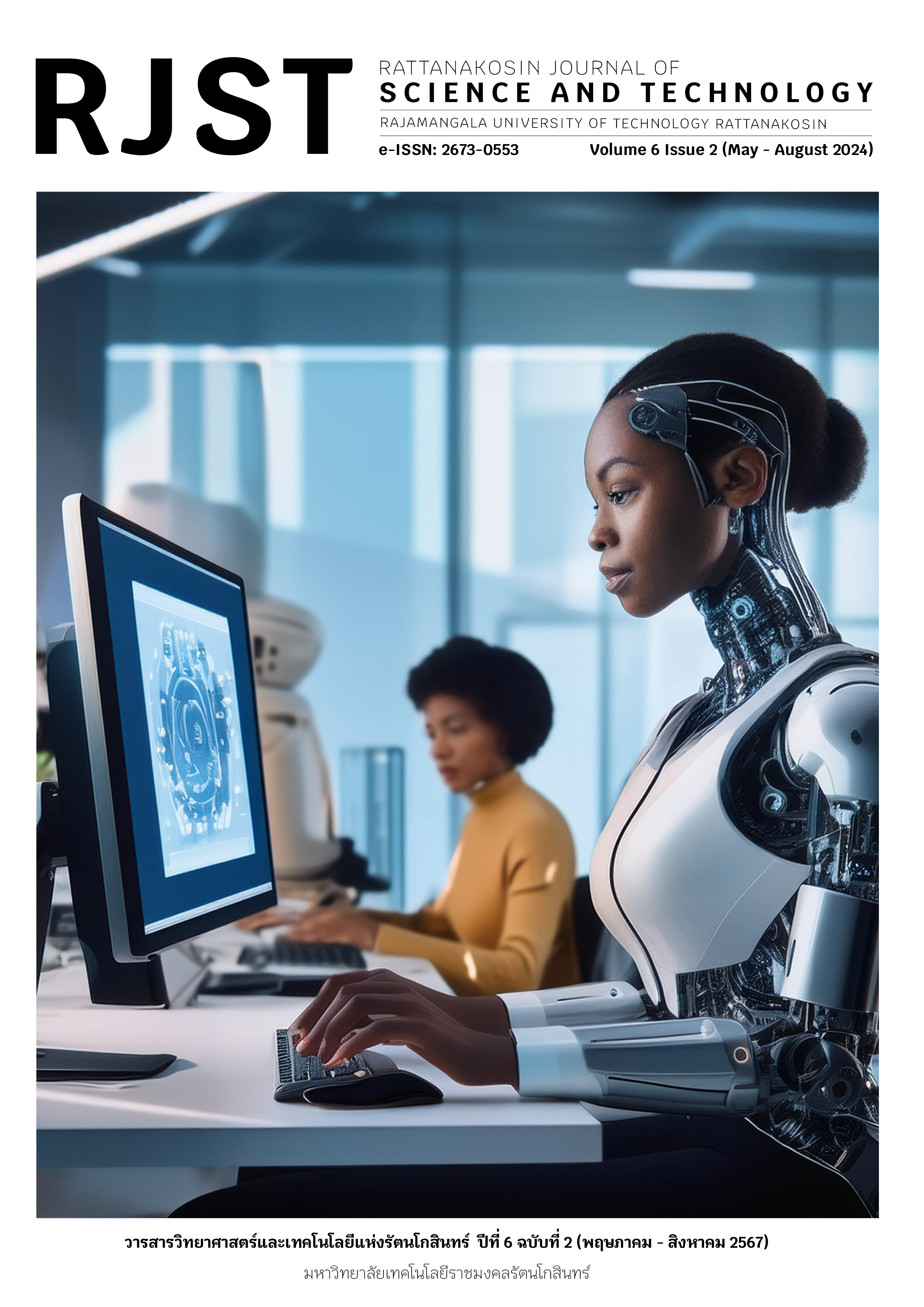Developing a system for tracking, monitoring, and alerting to cyber threats on server computer using techniques of real-time event analysis and response
Main Article Content
Abstract
This research aims to develop a system that can warn of cyber threats such as simple brute force attacks that occur on host computers or servers which provides access to data from outside the organization. Therefore, the developing system has alerted server computer administrators to receive information in near real-time notifications. Then, it can be able to prevent damage from cyber intrusion and continuously supervise the server computer at any time of the cyber attack. The research result found that in brute force attacks on servers, researchers use the developed system such as a system for tracking, monitoring, and alerting to cyber threats on servers using real-time event analysis and response techniques to monitor, detect, analyze, and alert to server computer administrators before any cyber attacker can harm the organization in real time with the highest efficiency ( = 5.00)
Article Details

This work is licensed under a Creative Commons Attribution-NonCommercial-NoDerivatives 4.0 International License.
The content within the published articles, including images and tables, is copyrighted by Rajamangala University of Technology Rattanakosin. Any use of the article's content, text, ideas, images, or tables for commercial purposes in various formats requires permission from the journal's editorial board.
Rajamangala University of Technology Rattanakosin permits the use and dissemination of article files under the condition that proper attribution to the journal is provided and the content is not used for commercial purposes.
The opinions and views expressed in the articles are solely those of the respective authors and are not associated with Rajamangala University of Technology Rattanakosin or other faculty members in the university. The authors bear full responsibility for the content of their articles, including any errors, and are responsible for the content and editorial review. The editorial board is not responsible for the content or views expressed in the articles.
References
สำนักงานคณะกรรมการการรักษาความมั่นคงปลอดภัยไซเบอร์แห่งชาติ. (2566). ข้อมูลเชิงสถิติการให้บริการ. จาก https://www.ncsa.or.th/service-statistics.html.
ATT&CK M. (2023). Versions of ATT&CK. จาก https://attack.mitre.org/resources/versions.
Zhang, S., Xie, X., and Xu Y. (2020). A Brute-Force Black-Box Method to Attack Machine Learning-Based Systems in Cybersecurity. IEEE Access, 8.
สุบิน ยุระรัช. (2565). ทำไมต้องลิเคิร์ต?. วารสารนวัตกรรมและการจัดการศูนย์ส่งเสริมและพัฒนางานวิจัย มหาวิทยาลัยศรีปทุม.
ปรเมศวร์ กุมารบุญ. (2561). การส่งเสริมการศึกษาในวิชาอาชญากรรมไซเบอร์. กรุงเทพฯ: วารสารวิชาการอาชญาวิทยาและนิติวิทยาศาสตร์ โรงเรียนนายร้อยตำรวจ.
บริษัท ไซเบอร์ อีลีท จำกัด. (2566). 7 ประเภท ของภัยคุกคามทางไซเบอร์ที่พบบ่อย. จาก https://www.cyberelite.co.th.
Abdullah Almurayh and Nasro Min-Allah. (2023). Password Cracking with Brute Force Algorithm and Dictionary Attack Using Parallel Programming. Applied Sciences-Vol. 13. Iss: 10, pp5979-5979.
Filkins B. (2019). An Evaluator' s Guide to NextGen SIEM. SANS Institute.
ธริช พงษ์รชนี. (2562). ระบบเฝ้าระวังและตรวจจับภัยคุกคามเว็บ เซิร์ฟเวอร์ Mini SOC Web Server. กรุงเทพฯ: มหาวิทยาลัยเทคโนโลยีมหานคร.
กิตติภณ พละการ กิตติภพ พละการ สมชาย ประสิทธิ์จูตระกูล และสุกรี สินธุภิญโญ. (2561). Python 101. พิมพ์ครั้งที่ 2. กรุงเทพฯ: คณะวิศวกรรมศาสตร์ จุฬาลงกรณ์มหาวิทยาลัย.
Vlad-Mihai C. (2016). SIEM (Security Information and Event Management Solutions) Implementation in Private or Public Clouds. Scientific Bulletin of Naval Academy.


